AF zoom normal
Nikon, Sigma, Tamron auto focus zooms – normal range (relative to DX format)

Tamron 17-50 2.8 (DX; no VR or motor)
At a price of 350 Euro for the Tamron against 1400 Euro for the Nikkor the question is: Is the Nikkor more than 3x times better optically? The answer depends on your priorities and the patience to find a perfrect sample. The lens has a decent built quality but it is plastic from top to bottom. I find the built quality a little bit better than the 18-70 but not by much. It certainly does not claim to be a Nikkor 17-55 in this regard, but the built quality is still good enough. The lens is relatively compact and focuses quickly despite the lack of AF-S/HSM.
Optically the lens performs great. It is sharp even wide open, at f/4.0 it already reaches the peak level that holds up until f/11. At the wide end vignetting and CA can be observed, filed curvature is also in issue with this lens but easily mastered. This lens performs on the same level as some of my fix-focals do. From f/4 to f/11 I can not see a difference between the Tamron and my 35mm 2.0 Nikkor.
On important note for handling this lens: The focus throw is so short, that the lens sometimes does not refocus on subjects that are very close together and farther away than a metre. In tricky situations where you really want to be safe it is better to focus at something distant and then refocus. This may all sound a bit negative but the really superb optical performance in day-to-day shooting far outweigh these minor glitches and I really like this lens. This lens has a high sample variation and buying this lens in a reputable store is a must. When you get this lens check it for front/backfocus, soft sides and the ability to focus at infinity. If you have issues it is better to send it to Tamron for calibration. My lens refused to focus on anything farther than 15 metres (extremely visible at 50mm and f/2.8, focus on a house far away, trees in 15 metres distance were sharp, house was not). I decided to send the lens to Tamron instead of changing it through the retailer. It took them five weeks to get it back to me but they did a great job in calibrating this lens. Highly recommended lens with a few issues, but if you get a good copy it is hard to beat.
UPDATE 10-2013: The lens developed a decentering defect without any harsh physical impact after six years of use. I went for something more substantial afterwards (see below).
Samples (DX): 19mm f8 50mm f4 19mm f3,2 17mm f3,5 34mm f5,6
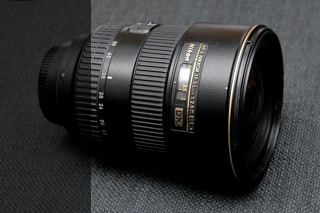
Nikon AF-S DX 17-55 2,8
In the days before a 35mm frame equivalent sensor became the standard, Nikon introduced this DX lens together with the D2h in 2003. Availability was delayed until spring 2004.
Aiming at professionals, the lens comes with the usually impressive build quality of Nikon pro-lenses, as well with a professional (original) price tag of 1600 €. In the recent years Nikon reduced the price to currently (2014) around 1200 €.
The position of the lens within Nikons lineup is a bit of a mystery. Between 2012 and the beginning of 2016 there was no professional DX body available. A D7000/D7100/D7200 user is not a very likely candidate to purchase this lens – and that’s not not only because of the price. On a smaller DX body this lens seems heavily out of balance. With the introduction of the D500 in 2016 this all changed and many people consider this lens as the perhaps perfect match of professional lens for the professional camera body. However, the age of the lens design gives many people a pause.
Handling this lens is a bit more complicated than with other lenses. These difficulties lead very often to a misinterpretation of the possible lens performance. This, in turn, has led to an overall bad reputation on the Internet. Very rarely this lens gets recommended, which in my opinion is a pity.
In the first section of this review I would like to discuss the general statements about this lens and compare those to my own experience. Base for this was the usage of two samples, one produced in 2003 and one purchased new in 2013:
– The 17-55 suffers from severe field curvature. True. Field curvature is increased compared to other lenses and can lead to weak resolution at image borders. However, the situation is not so horrible as it sounds. The field curvature becomes only an issue when the focus is not correctly set. Landscapes sharp from edge to edge at 17mm and f/5,6 are perfectly possible.
– The 17-55 has weak resolution at image borders. Wrong. See above.
– The 17-55 has difficulties to focus at the wide end. True. For whatever reason, the focus of the lens sometimes stops way before the infinity mark at landscape distance and focal lengths between 17mm and 24mm. Zoom in to 28mm or 35mm, focus, zoom back out and you get a very good landscape picture already at f/2,8 and an excellent one at f/4. Newer samples seem to be less affected.
– The 17-55 is not suited for landscapes. Wrong. If you focus correctly, you get pictures as good as possible.
– The 17-55 is not as sharp as a Sigma or Tamron 17-50 2,8. Partly true. My Tamron is a tiny bit sharper stopped down to f/5,6 and under, but the difference is not huge. Wide open and at f/4 the Nikon 17-55 blows the Tamron away.
– The 17-55 does not resolve enough detail to be future proof. Wrong. I can only judge 12 MP and 15,3 MP (on D800) performance right now. There is not much difference and I expect that this lens also performs at 24 MP.
– The 17-55 is weak at 55mm and 2,8. Partly. Lens performance drops towards the long end at f/2,8, but is still satisfactory overall. Stop down to 4,0 above 45mm and you are set.
– The 17-55 is too expensive. Taking into account build, AF-S focus and optics, I don’t think so.
Many lens characteristics can already be evaluated by the listing above, but there is more. Like already mentioned, sharpness is great wide open across the zoom range. Stopping down to f/3,5 improves overall contrast a little bit, otherwise even f/2,8 can be used without hesitation. Even on the D500 the aperture of 4,0 is excellent from 24mm and up, below that stopping down to f/5,6 is recommended if perfect corner and border performance is needed.
Vignetting is surprisingly low for a DX wideangle lens. It increases a bit towards the long end, but nothing to worry about. Distortion is average at wider settings. Ghosts can easily become a problem depending on the light situation. Bright objects in a picture reduce contrast a bit, but this is nothing to worry about.
Image rendering is best described as ” old style “. Compared to recent FX lenses the 17-55 renders pictures more like the 28-70 2,8 and not so clinical like the newer 24-70 2,8. Overall colors are a bit cooler and more in line with the lenses up to the 90’s. This in itself is a kind of indicator for the time in which this lens was designed.
Purchasing this lens is a difficult decision. Used prices vary from 600 € in average condition and up to 850 € for mint samples. Currently the lens sells for 1200 € new. Since some of these lenses have been used by professionals, I would be careful buying used.
A big competition arises from the very good Sigma and Tamron 17-50 2,8 lenses. They are both available with VR and cost less than a third.
My biggest personal gripe with the Tamron was, that it developed a decentering defect after 6 years of use. This was my reason to go for a lens with a better build quality for my range of DX bodies. On top of that I was really surprised and excited by the image quality – the bad press on the internet does not do the lens any justice.
An excellent optical performance and superb build quality are well worth the price – even in 2014 and without a new pro DX body in sight.
Samples (DX/12MP): 17mm f3,5 17mm f8,0 17mm f2,8 17mm f4,0 26mm f2,8 55mm f4,0
Samples D500 (DX/20MP): 17mm f2,8 17mm f4,0 17mm f8,0 24mm f2,8 28mm f4,0
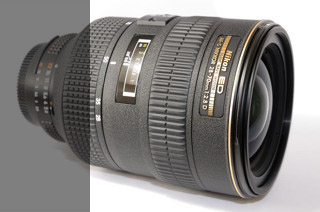
Nikon AF-S 28-70mm 2,8
The top lens in this focal range from 1999 to 2007 has found the way into many photographers bags. Total production around 130.000 lenses.
Perhaps the biggest problem of this lens is the size. You will not go unnoticed with this one mounted on the camera. I have received more (friendly and more often not so friendly) comments by strangers with this lens mounted than any other, including big tele lenses. I think that the big diameter coupled with the very impressive lens hood draws a kind of attraction that I learned not to like right away during the first weeks of use. Interestingly the successor 24-70 2,8 is not much shorter and only a few grams lighter, but is sill characterized as being smaller. This is only due to the slightly reduced diameter of the lens body, which leads to a more slender appearance. The lens conveys a feeling of very high built quality.
Optically the lens is almost faultless with two exception. The first one is flare and ghosting which has been reduced in the successor. The second one is purple fringing at wider apertures. Bright objects develop a blue glow around them, which is hard to correct even in PP. From 28mm to 40mm this problem is not very relevant and only seen at f/2,8 to f/3,2. From 40mm to 70mm the problem gets worse until you have to stop down to f/4 or f/4,5 at 70mm to get rid of the problem entirely. Sharpness is very good even wide open across the whole focal range, color and contrast are also very pleasing.
Sample (FX/36MP): 28mm f8
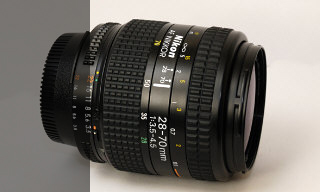
Nikon 28-70mm 3.5-4.5
A quite compact lens entirely made of plastic (except the lens mount) but with a feeling of quality. Stopped down to f/8 the performance is quite good, but I have the feeling that this lens is already at it’s limit with a 10 MP DX-sensor. No extraordinary positive or negative aspects, but a solid performer. Shooting wide open in bright light is not recommended, the lens develops an internal veiling in these situations.
Image quality at f/8 has no flaws and color and contrast are very good. Up to 50mm even f/5,6 can be heartfully recommended.
Sample (FX/36MP): 28mm f8
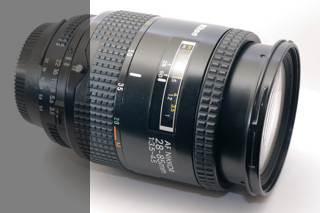
Nikon AF 28-85mm 3,5-4,5
Price in Germany 1989: 749,- DM, one of the first AF lenses in 1986 with the same optical construction as the previous AI-S lens. More than 350.000 lenses produced until 1999.
A quite popular choice for a midrange walkaround zoom during the 90’s. Performance is as you would expect from a walkaround zoom with no outstandig specifications. It produces good pictures and is sharp already stopped down 2/3rd of a stop across the zoom range. Overall image quality is a good average. I would recommend the smaller and cheaper 28-70mm 3,5-4,5 over it any time.
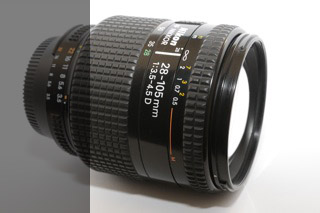
Nikon AF 28-105mm 3,5-4,5
Review coming soon.
Sample (FX/36MP): 28mm f5,6 105mm f8
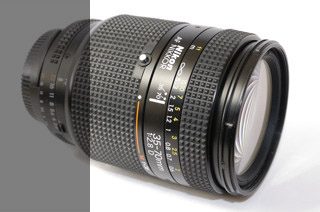
Nikon AF 35-70mm 2,8
A lens with a long history and production time. Introduced in 1987 and updated to AF-D specification in 1992 the lens remained for eighteen years in production until 2005 despite the 1999 introduced successor AF-S 28-70 2,8. It was popular during all theese years because it is smaller than the 28-70mm 2,8 and much cehaper. While the bigger brother costed 1900 Euro in Germany (2004), the 35-70mm sold for only 800 Euro. Introductory price was 1200 DM in 1987, clearout price in 2006 only 500 Euro. Total production around 570.000 units.
The 35-70mm is still very popular on the used market and that is mostly because you can achieve a picture quality that does not stand behind the newer 28-70mm or 24-70mm lenses. But this comes at a high risk: sample variaton. I am already on my second copy of the lens after my first (non-D) model performed obviously below standard. Originally I simply ignored the lens after the first bad experience but reading glowing reviews again and again I bought a second sample, a D-model. Optically the non-D and D-versions are the same and should perform identical. While the first sample was not sharp until f/4 on the wide and f/5,6 on the long end with lots of veilling the second lens is sharp even wide open. On the long end wide open performance declines a bit but is still satisfactory. The built quality is very solid with an all-metal construction. The push-pull operation may not be to everybodys liking as well as the rotating front lens during focus operation.
During the last year I read various reports that an inner lens group is known to unbound because of bad glue. In the result this lens element fogs up and pictures loose contrast. The issue is known and Nikon can replace the component for approximately 300 Euro.
I often read that the lens has a focus issue at shorter disances and I was able to confirm that with the fist (bad) lens but with the newer sample I can not see such an effect. The only optical problem of this lens is the tendency for flare and ghosting. When used on a DX camera a bigger hood than the smallish HB-1 may be of help. On DX I use either the screw-in HN-23 or a much bigger HB-15 which still works fine; for FX you need the recommended hood.
The lens offers high image quality when you get a good sample but I have the feeling that there are many bad copies out there. Buying this lens used is a risk.
Sample (FX/36MP): 35mm f2,8 35mm f5,6 58mm f5,6
Nikon AF-S DX 18-70 3.5-4.5
Kit lens introduced with the D70 DSLR. I worked with it for one year and sold it due to the lack of speed (aperture wise) and not-so-excellent performance below 24mm. Between 24mm and 70mm and an aperture of 5.6 or 8.0 this lens was fabulous. If you are looking for a “first lens” with your first Nikon DSLR, go for this lens. Then try to find out what your shooting style is and built your lens collection from this lens on as a starting point.
Sample (DX): 18mm f8
